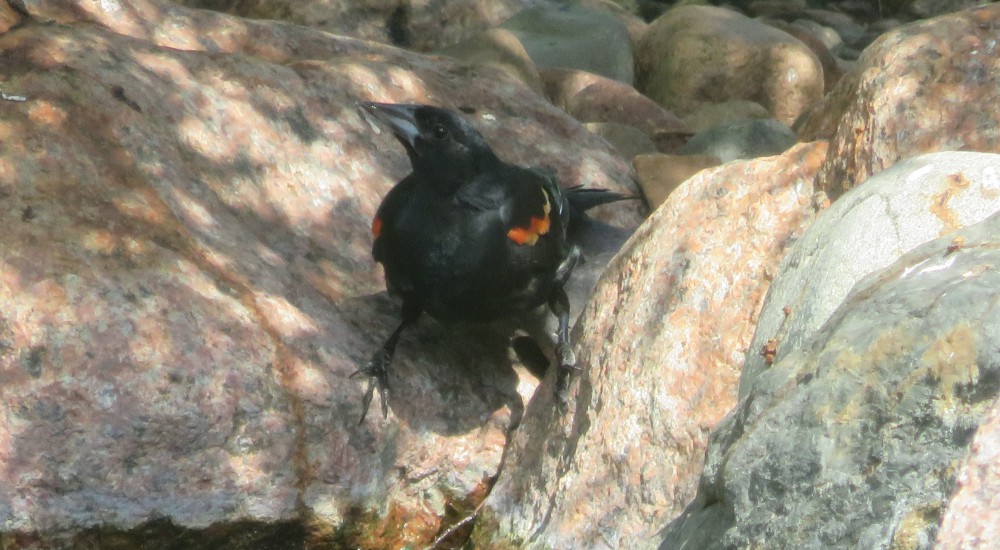Red-wing Blackbirds. You’ve heard them. You’ve seen them. There is no shortage in Crow Island Woods or in the rest of North America. Some describe red-wings as noisy but others relish their songs and calls as harbingers of spring. They are one of the first species to return in late February and early March. Males return first to establish nesting spots. While red-wings aren’t likely to nest in Crow island Woods, you will see small flocks foraging and you will definitely hear them call, whistle, signal and sing. Red-wing Blackbirds have a large repertoire of raspy, rattling and shrill vocalizations. The most recognizable sounds are the check whistle and the very unmelodic chonk-la-ree song. In appearance, the females are mostly brown with heavily streaked under parts, a white eye line and often a faint red patch on the shoulder. Males are a deep, glossy black with a margin of yellow and distinct red patches or epaulettes on their wings. First year males look similar to the females but have more golden coloring and their wing patch is more distinct.
Researchers have experimented with dying the red wing epaulettes black in the hopes of discovering what role they play in the lives of these aggressive birds. Do they assist in attracting mates, provide a means of identifying members of the flock or do they support a groups’ social structure in some way? The results of various studies were consistent. Territories of males with epaulettes dyed black were repeatedly taken over by males with red wing epaulettes. Observers also noticed that when an undyed male staked out a territory, he would hide his red epaulettes. Once he’s settled on a territory, he will boldly display them to intruders and vigorously defend his territory. Seeing the epaulettes hidden when behaving non-aggressively and seeing them displayed when behaving aggressively, led researchers to conclude that the red epaulettes are a signal to peers of the bird’s intentions and support the flock’s social structure. This is particularly important when establishing and holding a nesting territory.
Nesting in colonies, males will locate territories adjacent or in close proximately to each other. The nesting territories of these polygamous birds are very busy places. Males may have anywhere from 1 to 10 females nesting in their territory. Females have 1-3 broods a season and build a new nest for each one. In addition, a female’s offspring are typically of mixed paternity with 20-50% being sired by males from neighboring territories.
Red-wing Blackbirds are not universally loved but they have their supporters. Those who regularly fill feeders with grains and seeds in order to attract them to their yard. Maybe you don’t care for the polygamous life-style, don’t relish them as harbingers of spring or you view Red-wing Blackbirds as the bullies at your birdfeeder. If this is the case, take solace in knowing that just as they are one of the first species to return in spring, they are also one of the first to leave Crow Island Woods in the fall.






Pingback: Birds In Crow Island – Save Crow Island Woods